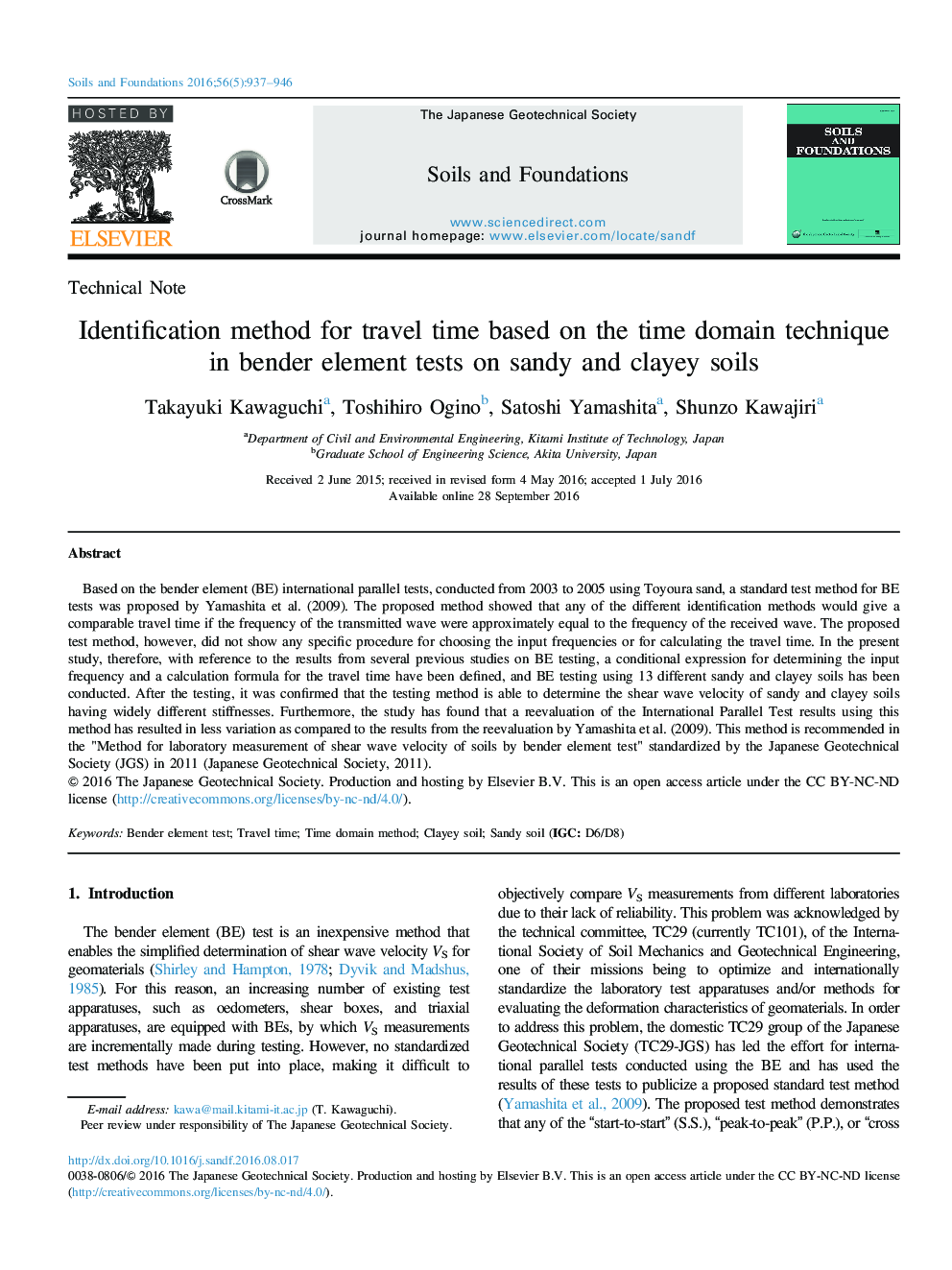| Article ID | Journal | Published Year | Pages | File Type |
|---|---|---|---|---|
| 4927679 | Soils and Foundations | 2016 | 10 Pages |
Based on the bender element (BE) international parallel tests, conducted from 2003 to 2005 using Toyoura sand, a standard test method for BE tests was proposed by Yamashita et al. (2009). The proposed method showed that any of the different identification methods would give a comparable travel time if the frequency of the transmitted wave were approximately equal to the frequency of the received wave. The proposed test method, however, did not show any specific procedure for choosing the input frequencies or for calculating the travel time. In the present study, therefore, with reference to the results from several previous studies on BE testing, a conditional expression for determining the input frequency and a calculation formula for the travel time have been defined, and BE testing using 13 different sandy and clayey soils has been conducted. After the testing, it was confirmed that the testing method is able to determine the shear wave velocity of sandy and clayey soils having widely different stiffnesses. Furthermore, the study has found that a reevaluation of the International Parallel Test results using this method has resulted in less variation as compared to the results from the reevaluation by Yamashita et al. (2009). This method is recommended in the "Method for laboratory measurement of shear wave velocity of soils by bender element test" standardized by the Japanese Geotechnical Society (JGS) in 2011 (Japanese Geotechnical Society, 2011).
